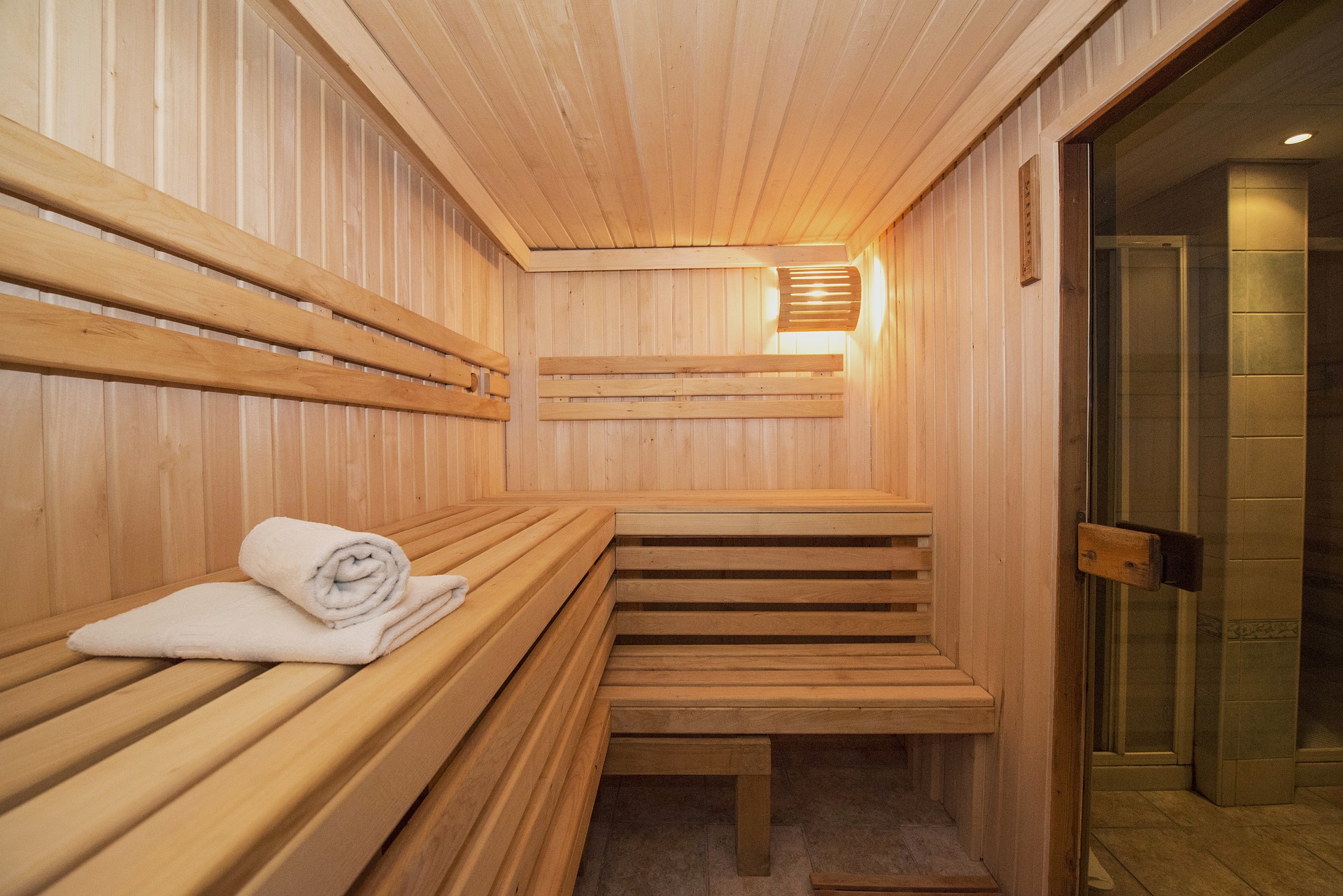
Heat Stress Effects on Mental Health
Image sourced from The Ice Bath.
The healing powers of sauna usage have only recently been studied, despite its ancient history across numerous countries including Russia, Japan, North America, and Finland. Dr. Rhonda Partick investigates the mental health benefits, among other positive effects, of sauna usage in her 18-page research packed article with over 100 sources.
This review will break down some of her findings and specifically discuss the effects of sauna usage on mental health. You can find the full article here – which also takes a deep dive into cardiovascular and athletic impact, as well as molecular mechanisms and chemical changes behind the outcomes of sauna usage.
Dr. Rhonda Patrick has a Ph.D. in biomedical science from the University of Tennessee Health Science Center and St. Jude Children’s Research Hospital. She has widely researched aging, cancer, and nutrition. She often educates on the advantages of exposing the body to exercise, fasting, heat stress, or cold exposure, and the value of mindfulness, stress reduction, and sleep.
The Main Components of Sauna Use
Sauna usage is short-term inactive exposure to extreme heat, which causes the body’s core temperature to increase in a process called hyperthermia. The body’s core temperature is generally measured with a thermometer and ranges typically between 97.7-99.5 °F. Saunas are comprised of four main components – heat, humidity, duration, and temperature.
Heat in modern saunas is supplied from conventional or infrared heaters. The temperature can range from 113 to 212 degrees Fahrenheit, with conventional heaters supplying the most heat.
Humidity can be either wet or dry. Wet saunas use steam with high humidity, while dry saunas use low humidity.
Finnish people are arguably the most prominent users of saunas. Dr. Rhonda Partick writes, “Finnish-style sauna bathing involves one to three sessions of heat exposure lasting five to 20 minutes each, interspersed with periods of cooling.” (1)
How the Body Responds to Heat Stress
It’s unsurprising that exposure to high temperatures stresses the body and causes a response. What is surprising is how that response conditions the body to handle other “more devastating stressors.”
“The physiological responses to sauna use are remarkably similar to those experienced during moderate- to vigorous-intensity exercise,” explains Dr. Partick.
The body adapts to heat from reoccurring sauna use and prepares itself for future exposures. Protective mechanisms are triggered that repair cell damage through a biological process known as hormesis.
Molecular mechanisms also respond – which include higher expression of proteins that play an essential role in immune function, cell signaling, and cell-cycle regulation as well as antioxidant, pro- and anti-inflammatory factors.
Heat Stress Effects on Inflammation and Why it Matters for Mental Health
Chronic inflammation occurs in the body as a response to toxins and other stressors. This type of inflammation is tied to most chronic disease and plays an impactful role in many psychological disorders, including anxiety and depression.
“Elevated biomarkers of inflammation are commonly observed in people who have depression,” concluded Dr. Partrick. These elevated levels of inflammation are also present in people with anxiety.
A protein referred to a CRP is one blood protein that at elevated levels is associated with inflammation in the body. Dr. Rhonda Partick explains that sauna use lowers the level of CRP in the blood, after reviewing a study of over 2,000 men living in Finland where a higher frequency of sauna use resulted in lower levels. (2)
Sauna Use and Postive Effects on Mental Health
Although a significant focus of Dr. Rhonda Partick’s article was on cardiovascular health, she did do a deep dive on the mental health effects. She remarked that sauna use has been shown to decrease symptoms of depression.
Among the multiple trials she reviewed, one randomized study stood out to me as it also showed reduced symptoms of anxiety. This trial exposed 28 individuals diagnosed with mild depression to four weeks of sauna usage. Participants encountered lower symptoms of depression, anxiety, and body aches, as well as improved appetite. (3)
One study frequently mentioned in her article is the Kuopio Ischemic Heart Disease Risk Factor (KIHD) Study, which is an ongoing population study of more than 2,300 middle-aged men from eastern Finland. Dr. Partick states, “Men who used the sauna two to three times per week had a 66 percent lower risk of developing dementia and a 65 percent lower risk of developing Alzheimer’s disease, compared to men who used the sauna only one time per week.” (4) She goes on to explain that participants who visited the sauna four to seven times a week were 77 percent less likely to develop psychotic disorders, despite dietary habits, socioeconomic status, physical activity, and inflammatory status. (5)
Mental focus and attention span may also be affected by sauna use due to the hormones norepinephrine and prolactin. Norepinephrine increases focus and attention, while prolactin helps the brain function quicker and repair nerve cell damage. (6)(7)
Dr. Partick notes that a study involving women who participated in 20-minute sessions two times a week in a dry sauna had an 86 percent increase in norepinephrine and 510 percent increase in prolactin. (8)
What sauna findings on mental health mean for you…
As Dr. Rhonda Patrick outlines in her extensive research, sauna usage may hold a strong case for positively impacting mental health. If you are in a healthy condition and want to better your mental health or experience issues with focus, depression, or anxiety, sauna usage may be something worth exploring. Be sure to consult your doctor as you consider visiting a sauna. You can also raise your core body temperature at home, although it may not reach the same extremes, by taking hot baths in an enclosed bathroom.
Sources – all sited from Dr. Rhonda Patrick’s Sauna Article
- Kukkonen-Harjula, Katriina, and Kyllikki Kauppinen. Health effects and risks of sauna bathing International Journal of Circumpolar Health 65, no. 3 (July 2006): 195–205. doi:10.3402/ijch.v65i3.18102.
- Laukkanen, Jari A., and Tanjaniina Laukkanen. Sauna bathing and systemic inflammation European Journal of Epidemiology 33, no. 3 (December 2017): 351–53. doi:10.1007/s10654-017-0335-y.
- Masuda, Akinori, Masamitsu Nakazato, Takashi Kihara, Shinichi Minagoe, and Chuwa Tei. Repeated Thermal Therapy Diminishes Appetite Loss and Subjective Complaints in Mildly Depressed Patients Psychosomatic Medicine 67, no. 4 (July 2005): 643–47. doi:10.1097/01.psy.0000171812.67767.8f.
- “{OUP} Accepted Manuscript.” Age And Ageing, 2016. doi:10.1093/ageing/afw212.
- Laukkanen, Tanjaniina, Jari A. Laukkanen, and Setor K. Kunutsor. Sauna Bathing and Risk of Psychotic Disorders: A Prospective Cohort Study Medical Principles and Practice 27, no. 6 (2018): 562–69. doi:10.1159/000493392.
- Salbaum, J.Michael, Chiara Cirelli, Elisabeth Walcott, Les A. Krushel, Gerald M. Edelman, and Giulio Tononi. Chlorotoxin-mediated disinhibition of noradrenergic locus coeruleus neurons using a conditional transgenic approach Brain Research 1016, no. 1 (July 2004): 20–32. doi:10.1016/j.brainres.2004.03.078.
- Gregg, C., V. Shikar, P. Larsen, G. Mak, A. Chojnacki, V. W. Yong, and S. Weiss. White Matter Plasticity and Enhanced Remyelination in the Maternal CNS Journal of Neuroscience 27, no. 8 (February 2007): 1812–23. doi:10.1523/jneurosci.4441-06.2007.
- Laatikainen, T., K. Salminen, A. Kohvakka, and J. Pettersson. Response of plasma endorphins, prolactin and catecholamines in women to intense heat in a saunaEuropean Journal of Applied Physiology and Occupational Physiology 57, no. 1 (1988): 98–102. doi:10.1007/bf00691246.
- Header Image sourced from The Ice Bath, https://theicebath.com.au/



